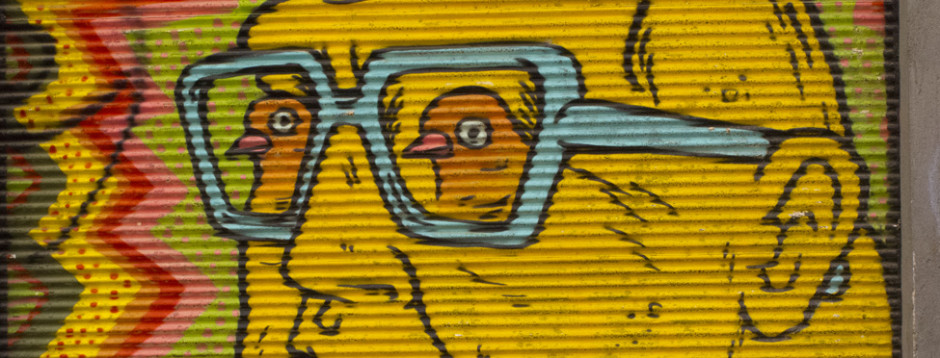Posted on in ArtSpiel

Install photo of Radiance: They Dream in Color
The Venice Biennale, a sprawling art Universe, takes over the city every other year alternating its focus between art and architecture. Due to Covid, 2020 was cancelled, and the 2022 festival attracted an unprecedented number of visitors. The 2022 exhibition has received almost unparalleled praise for its inclusiveness, its artistry and its cohesion as a statement of the art Zeitgeist. It hasn’t hurt that the principle exhibition, The Milk of Dreams was curated by women, celebrates women and under-represented artists, and is for the most part simply superb.
You can feel Venice almost groaning under the weight of visitors, especially at the Biennale’s official gathering points, the Arsanale and the Giardini, at the western end of the city. The wealth of exhibitions outside of the formal Biennale would be enough to warrant rapturous praise. Anselm Keifer at the Palazzo Ducale and Marlene Dumas at the Palazzo Grossi are each breathtaking. But everywhere you turn there are shows and performances and music. It’s deliciously overwhelming.
The Giardini is an exquisite city park housing over two-dozen exhibits each representing a single country. There are a limited number of National Pavilions so countries not anchored there bid to install in spaces all over the city. The result is some unexpected delights far from the maddening crowd.
The official Ugandan Pavilion is a show called Radiance: They Dream in Time. It’s a two-person show by London-based curator Shaheen Merali. Installed on a second floor in a series of small rooms above an office on an undistinguished alleyway, is one of the standout shows of the Biennale. It is the first time that Uganda has hosted a pavilion at the Biennale.
Collaged and painted portraits by Collin Sekajugo are hung alternately with fascinating mixed-fiber weaving constructions by Acaye Kerunen. Each artist has a solo room for installation, which allows both of them to really have their work sing. Sekajugo’s series of large paintings are titled Stock Photo. Some have a descriptive comment tacked on, such as “Water Tanks” or “How May I Direct Your Call”. Using stock photos as a starting point he has taken the images and totally made them his own. Using multiple, often overlapping patterns, large and small, bark and wax cloth as collage elements and vibrant saturated color, the paintings leap off the wall.
Sekajugo captures wry moments in the lives of contemporary Ugandans. A young couple on a date, a woman measuring her waist, a dapper and confident young man sitting on a mid-century mod sofa, (this one titled I Own Everything). Mundane scenes from everyday life, but each with a subtle twist and beautifully composed. The curatorial statement explains that the photos were originally of White models. By substituting Black figures Sekajugo makes a nuanced political statement about the evolution of a modern Ugandan society.

Stock Image 009-Oh No!, 2022, Acrylic , barkcloth and mixed media on canvas
I love that the fabrics and patterns frequently march out of their designated role and merge in unexpected ways. In Oh No!, Sekajugo uses wax cloth as wainscoting behind the figure, but its entire midsection has been taken over by the fabric, just as the metallic 70’s wallpaper has crept downward into the fabric. The man, nattily dressed in matching turquoise trousers and tie seems unaffected by all of this pattern creep. Sekajugo, often employs sgraffito through the solidly painted areas of his work, which adds yet another layer of texture to the paintings.
Stock Image 10—Falling In Love, 2022, Acrylic , barkcloth and mixed media on canvasStock Image 10—Falling In Love, 2022, Acrylic , barkcloth and mixed media on canvas
Stock Image 10—Falling In Love, 2022, Acrylic , barkcloth and mixed media on canvas
In his solo room installation, entitled Call Center, Sekajugo has painted the walls dark red and massed a series of smaller paintings of cheerful call center operators in the corner. Bright desk lamps, attached to an old-fashioned wooden desk, light them dramatically. On the desk are scattered vintage books about Uganda and dictionaries of varied local languages. It’s a funny and provocative installation. The room exudes good cheer and efficiency. The lighting may have been a clever solution to a less than ideal exhibition setting (there was no other light in the room), but it also suffuses the installation with brilliant tension.

Call Center Girls 1-12. 2022, Acrylic on canvas
This work is paired with sculpture in fiber media by Acaye Kerunen. She has worked with village women throughout Uganda, using local fiber techniques and materials to create completely fresh contemporary sculptures. She often takes functional woven objects like baskets or mats and combines them into one sculpture, irrespective of regional origin or use– recontextualizing them into lyrical sculptures that marry traditional craft with contemporary art.

Myel, 2022, Banana fiber, palm leaves, banana stem, stripped sorghum stems, raffia
A sculpture called Myel rises over five feet from the floor. It’s a tower of stacked basketry and weaving. Organic and architectural at the same time, the sculpture feels alive. The graceful forms and beautiful textures lead the eye up the tower to a tightly bound ball perched on the top. Ribbons of fiber optic cable grace the “neck” of the piece. The curator’s statement says that this represents the bringing of fiber optic technology to East Africa. The old meets the new.

Passion Flower, 2022, Banana fiber, palm leaves, raffia
The Uganda Pavilion introduced me to two artists whose work I might never have seen before. The two compliment each other beautifully and give us a small, view into a blossoming, vibrant African art scene. This year’s Venice Biennale boasts both high profile and praise-worthy work like the triumphant sculptures of Simone Leigh, the official representative of the United States. But for me the real magic were the hidden gems, the out-of-the-way exhibits, and the newly discovered artists. Surprise and discovery are what keep this bi-annual art Mecca fresh and of global importance.
